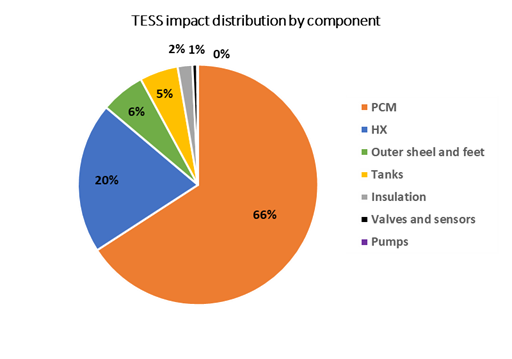The CHEST system is an energy management concept of future or recently established smart energy systems. The task of identifying market potential for the CHEST technology was very demanding and complex. The CHESTER consortium analysed legal, political, economic, technological, environmental and social aspects to identify and quantify the market for the CHEST technology as well as to gain insight into the potential for replication of the CHEST system.
For the moment, a capacity range between 1 MWel and 100 MWel gives the highest installation potential for the CHEST, since there is a missing energy storage potential with main competing energy storage technology pump hydro storage, which is only feasible at locations with elevation differences. Moreover, the CHEST system has both functionalities as thermal and electric storage, which widens its application to the heating systems such as district heating and industrial hubs. The CHEST main components are known and mature technologies, which are flexible in operation and able to rapidly startup. This enables the CHEST system to participate in electricity markets including Replacement Reserve (RR) and Imbalance services (IN), and to some extent also in Frequency restoration reserves with manual activation (mFRR).
From an economical point of view, CHEST currently has a high CAPEX. The cost of a CHEST plant is expected to gradually decrease over the coming years as the main components should get integrated and further developed, thereby seeing the investment costs reduced.

Moreover, the CHEST system has advantages over other storage technologies from the technical point of view such as:
- It is more compact for the same electric capacity.
- It has more stable operation over time (does not lose efficiency over years).
- It has functionality of both thermal and electricity storage.
- It does not depend on geographical features.
- It can be used as a seasonal storage.
In the EU, with current market conditions, a study from the CHESTER project has shown a maximum potential of 4 GWel storage capacity for District Heating integrated systems. This rather small amount can be explained by the relatively low spread of district heating in current energy systems in the EU. The share of heat covered by district heating is growing, however and is expected to grow even more significantly worldwide to meet the carbon emission targets in the upcoming years. According to the project Heat Roadmap Europe 4, DH covered just above 10% of the heat demand from the main 14 countries of the EU in 2015 and could cover 40-50% of the heat demand by 2050, while decreasing associated CO2 emissions by 86%. This increasing share of heat supplied by district heating (with a higher share of renewables) consequently means an increased market potential for the CHEST system.
For the CHEST system working as pure electricity storage connected to the grid, a market potential of 30 GWel has been estimated. However, compared to the abovementioned potential for combined heat and electricity integration, the electricity-only integration shows lower economic feasibility and will likely be more exposed to competing electricity storage solutions.



